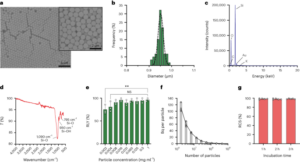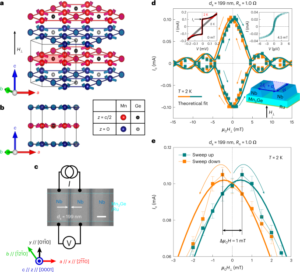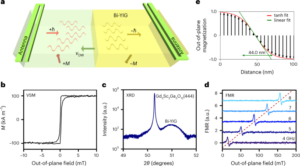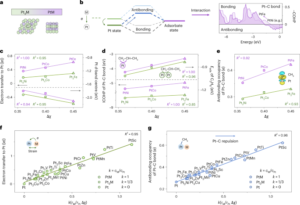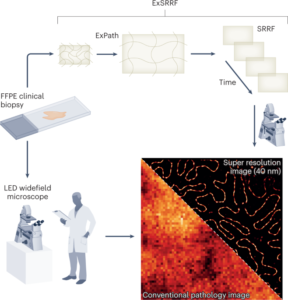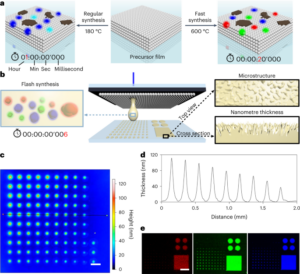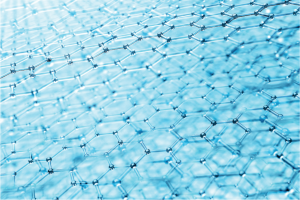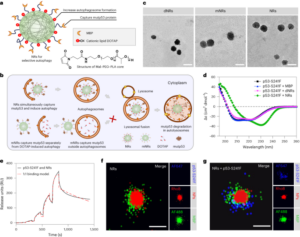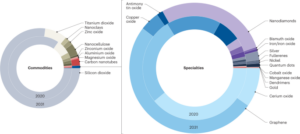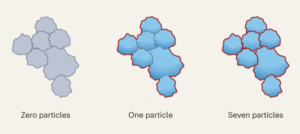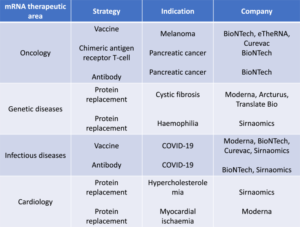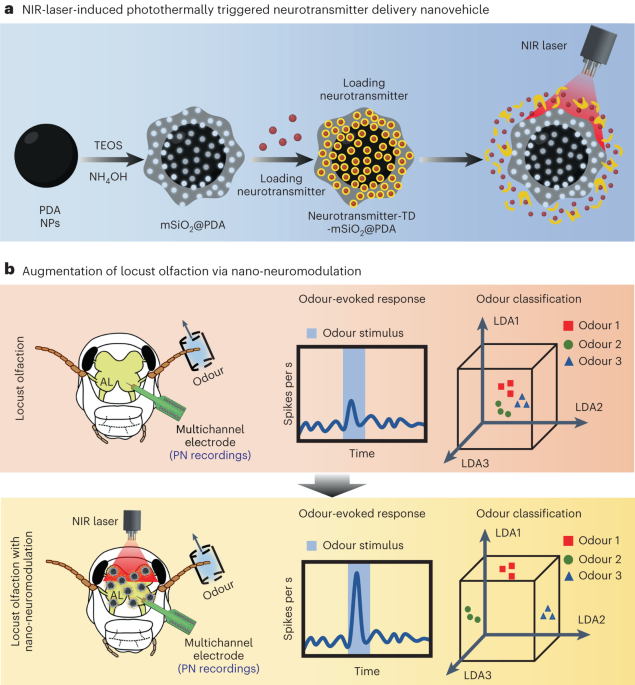
Peng, G. et al. Diagnosing lung cancer in exhaled breath using gold nanoparticles. Nat. Nanotechnol. 4, 669–673 (2009).
Strauch, M. et al. More than apples and oranges—detecting cancer with a fruit fly’s antenna. Sci. Rep. 4, 3576 (2014).
Raman, B., Meier, D. C., Evju, J. K. & Semancik, S. Designing and optimizing microsensor arrays for recognizing chemical hazards in complex environments. Sens. Actuators B 137, 617–629 (2009).
Dunn, M. & Degenhardt, L. The use of drug detection dogs in Sydney, Australia. Drug Alcohol Rev. 28, 658–662 (2009).
Nagle, H. T., Gutierrez-Osuna, R., Kermani, B. G. & Schiffman, S. S. in Handbook of Machine Olfaction: Electronic Nose Technology (eds Pearce, T. et al.) chap. 17, 419–444 (Wiley Online Library, 2002).
Brattoli, M. et al. Odour detection methods: olfactometry and chemical sensors. Sensors (Basel) 11, 5290–5322 (2011).
Terutsuki, D. et al. Real-time odor concentration and direction recognition for efficient odor source localization using a small bio-hybrid drone. Sens. Actuators B 339, 129770 (2021).
Saha, D. et al. Explosive sensing with insect-based biorobots. Biosens. Bioelectron. X 6, 100050 (2020).
Ma, S., Li, B. & Li, Y. The steering jump control of a locust bio-robot via asynchronous hindleg kickings. Adv. Intell. Syst. 4, 2200082 (2022).
Le, D. L. et al. Neurotransmitter-loaded nanocapsule triggers on-demand muscle relaxation in living organism. ACS Appl. Mater. Interfaces 10, 37812–37819 (2018).
Lorig, T. S. On the similarity of odor and language perception. Neurosci. Biobehav. Rev. 23, 391–398 (1999).
Saha, D. et al. A spatiotemporal coding mechanism for background-invariant odor recognition. Nat. Neurosci. 16, 1830–1839 (2013).
Saha, D. et al. Engaging and disengaging recurrent inhibition coincides with sensing and unsensing of a sensory stimulus. Nat. Commun. 8, 15413 (2017).
Lizbinski, K. M. & Dacks, A. M. Intrinsic and extrinsic neuromodulation of olfactory processing. Front. Cell. Neurosci. 11, 424 (2018).
Wang, Y. & Guo, L. Nanomaterial-enabled neural stimulation. Front. Neurosci. 10, 69 (2016).
Acarón Ledesma, H. et al. An atlas of nano-enabled neural interfaces. Nat. Nanotechnol. 14, 645–657 (2019).
Benfenati, F. & Lanzani, G. Clinical translation of nanoparticles for neural stimulation. Nat. Rev. Mater. 6, 1–4 (2021).
Zhang, Y. et al. Transcranial nongenetic neuromodulation via bioinspired vesicle-enabled precise NIR-II optical stimulation. Adv. Mater. https://doi.org/10.1002/adma.202208601 (2022).
Garcia-Etxarri, A. & Yuste, R. Time for nanoneuro. Nat. Methods 18, 1287–1293 (2021).
Yoo, S., Park, J.-H. & Nam, Y. Single-cell photothermal neuromodulation for functional mapping of neural networks. ACS Nano 13, 544–551 (2018).
Rastogi, S. K. et al. Remote nongenetic optical modulation of neuronal activity using fuzzy graphene. Proc. Natl Acad. Sci. USA 117, 13339 (2020).
Yoo, S., Hong, S., Choi, Y., Park, J.-H. & Nam, Y. Photothermal inhibition of neural activity with near-infrared-sensitive nanotransducers. ACS Nano 8, 8040–8049 (2014).
Carvalho-de-Souza, J. L. et al. Photosensitivity of neurons enabled by cell-targeted gold nanoparticles. Neuron 86, 207–217 (2015).
Kang, H., Lee, G.-H., Jung, H., Lee, J. W. & Nam, Y. Inkjet-printed biofunctional thermo-plasmonic interfaces for patterned neuromodulation. ACS Nano 12, 1128–1138 (2018).
Lee, J. W., Jung, H., Cho, H. H., Lee, J. H. & Nam, Y. Gold nanostar-mediated neural activity control using plasmonic photothermal effects. Biomaterials 153, 59–69 (2018).
Eom, K. et al. Enhanced infrared neural stimulation using localized surface plasmon resonance of gold nanorods. Small 10, 3853–3857 (2014).
Yoo, S., Kim, R., Park, J.-H. & Nam, Y. Electro-optical neural platform integrated with nanoplasmonic inhibition interface. ACS Nano 10, 4274–4281 (2016).
Gholami Derami, H. et al. Reversible photothermal modulation of electrical activity of excitable cells using polydopamine nanoparticles. Adv. Mater. 33, 2008809 (2021).
Tan, Q. et al. Inorganic nano-drug delivery systems for crossing the blood–brain barrier: advances and challenges. Coord. Chem. Rev. 494, 215344 (2023).
Sebesta, C. et al. Subsecond multichannel magnetic control of select neural circuits in freely moving flies. Nat. Mater. 21, 951–958 (2022).
Hescham, S.-A. et al. Magnetothermal nanoparticle technology alleviates parkinsonian-like symptoms in mice. Nat. Commun. 12, 5569 (2021).
Zhang, Y. et al. Transcranial nongenetic neuromodulation via bioinspired vesicle-enabled precise NIR-II optical stimulation. Adv. Mater. 35, 2208601 (2023).
Sou, K., Le, D. L. & Sato, H. Nanocapsules for programmed neurotransmitter release: toward artificial extracellular synaptic vesicles. Small 15, 1900132 (2019).
Roeder, T., Seifert, M., Kähler, C. & Gewecke, M. Tyramine and octopamine: antagonistic modulators of behavior and metabolism. Arch. Insect Biochem. Physiol. 54, 1–13 (2003).
Taylor, P. & Radic, Z. The cholinesterases: from genes to proteins. Annu. Rev. Pharmacol. Toxicol. 34, 281–320 (1994).
Manzano, M. & Vallet-Regí, M. Mesoporous silica nanoparticles for drug delivery. Adv. Funct. Mater. 30, 1902634 (2020).
Mitchell, M. J. et al. Engineering precision nanoparticles for drug delivery. Nat. Rev. Drug Discov. 20, 101–124 (2021).
Ai, K., Liu, Y., Ruan, C., Lu, L. & Lu, G. Sp2 C‐dominant N‐doped carbon sub‐micrometer spheres with a tunable size: a versatile platform for highly efficient oxygen‐reduction catalysts. Adv. Mater. 25, 998–1003 (2013).
Wang, C., Ma, Z., Wang, T. & Su, Z. Synthesis, assembly, and biofunctionalization of silica‐coated gold nanorods for colorimetric biosensing. Adv. Funct. Mater. 16, 1673–1678 (2006).
Chen, X. et al. Alkalinity triggered the degradation of polydopamine nanoparticles. Polym. Bull. 78, 4439–4452 (2021).
Dante, S. et al. Selective targeting of neurons with inorganic nanoparticles: revealing the crucial role of nanoparticle surface charge. ACS Nano 11, 6630–6640 (2017).
Patel, M., Rangan, A. V. & Cai, D. A large-scale model of the locust antennal lobe. J. Comput. Neurosci. 27, 553–567 (2009).
Saha, D., Leong, K., Katta, N. & Raman, B. Multi-unit recording methods to characterize neural activity in the locust (Schistocerca americana) olfactory circuits. J. Visualized Exp. 71, e50139 (2013).
Rein, J., Mustard, J. A., Strauch, M., Smith, B. H. & Galizia, C. G. Octopamine modulates activity of neural networks in the honey bee antennal lobe. J. Comp. Physiol. A 199, 947–962 (2013).
Roeder, T. Octopamine in invertebrates. Prog. Neurobiol. 59, 533–561 (1999).
Hammer, M. & Menzel, R. Multiple sites of associative odor learning as revealed by local brain microinjections of octopamine in honeybees. Learn. Mem. 5, 146–156 (1998).
Bazhenov, M. et al. Model of cellular and network mechanisms for odor-evoked temporal patterning in the locust antennal lobe. Neuron 30, 569–581 (2001).
Francia, S. et al. Light-induced charge generation in polymeric nanoparticles restores vision in advanced-stage retinitis pigmentosa rats. Nat. Commun. 13, 3677 (2022).
Moon, G. D. et al. A new theranostic system based on gold nanocages and phase-change materials with unique features for photoacoustic imaging and controlled release. J. Am. Chem. Soc. 133, 4762–4765 (2011).
Brown, S. L., Joseph, J. & Stopfer, M. Encoding a temporally structured stimulus with a temporally structured neural representation. Nat. Neurosci. 8, 1568–1576 (2005).
Pouzat, C., Mazor, O. & Laurent, G. Using noise signature to optimize spike-sorting and to assess neuronal classification quality. J. Neurosci. Methods 122, 43–57 (2002).
- SEO Powered Content & PR Distribution. Get Amplified Today.
- PlatoData.Network Vertical Generative Ai. Empower Yourself. Access Here.
- PlatoAiStream. Web3 Intelligence. Knowledge Amplified. Access Here.
- PlatoESG. Carbon, CleanTech, Energy, Environment, Solar, Waste Management. Access Here.
- PlatoHealth. Biotech and Clinical Trials Intelligence. Access Here.
- Source: https://www.nature.com/articles/s41565-023-01592-z
- ][p
- 01
- 1
- 10
- 11
- 12
- 13
- 14
- 15%
- 16
- 17
- 19
- 1994
- 1998
- 1999
- 20
- 2001
- 2005
- 2006
- 2008
- 2011
- 2013
- 2014
- 2015
- 2016
- 2017
- 2018
- 2019
- 2020
- 2021
- 2022
- 2023
- 22
- 23
- 24
- 25
- 26
- 27
- 28
- 29
- 30
- 31
- 32
- 33
- 35%
- 36
- 39
- 40
- 41
- 43
- 46
- 49
- 50
- 51
- 52
- 7
- 8
- 9
- 98
- a
- activity
- advances
- AL
- Alcohol
- am
- an
- and
- antenna
- article
- artificial
- AS
- Assembly
- assess
- atlas
- Australia
- b
- barrier
- based
- Basel
- behavior
- Biomaterials
- Brain
- Breath
- bull
- by
- Cancer
- carbon
- catalysts
- cell
- Cells
- cellular
- challenges
- characterize
- charge
- chemical
- classification
- click
- Clinical
- Coding
- coincides
- COMP
- complex
- concentration
- control
- controlled
- crossing
- crucial
- delivery
- designing
- Detection
- diagnosing
- direction
- Dogs
- drone
- drug
- Drug Delivery
- E&T
- effects
- efficient
- Electronic
- enabled
- encoding
- engaging
- Engineering
- enhanced
- environments
- Ether (ETH)
- external
- Features
- For
- freely
- from
- functional
- generation
- Gold
- Graphene
- highly
- Honey
- Honey bee
- Hong
- http
- HTTPS
- Imaging
- in
- integrated
- Interface
- interfaces
- intrinsic
- jump
- Kim
- language
- large-scale
- learning
- Lee
- li
- Library
- LINK
- living
- local
- Localization
- machine
- mapping
- materials
- mechanism
- mechanisms
- methods
- mice
- model
- more
- moving
- multichannel
- multiple
- muscle
- Nam
- nanotechnology
- Nature
- network
- networks
- Neural
- neural networks
- neuronal
- Neurons
- neurotransmitter
- New
- Noise
- nose
- of
- on
- On-Demand
- online
- Optimize
- optimizing
- Park
- perception
- performance
- platform
- plato
- Plato Data Intelligence
- PlatoData
- precise
- Precision
- processing
- programmed
- Proteins
- quality
- R
- real-time
- recognition
- recognizing
- recording
- recurrent
- reference
- relaxation
- release
- remote
- representation
- resonance
- restores
- Revealed
- revealing
- Role
- s
- Scholar
- SCI
- select
- selective
- sensors
- signature
- Sites
- Size
- small
- smith
- SNB
- Source
- steering
- stimulus
- structured
- Surface
- sydney
- Symptoms
- synthesis
- system
- Systems
- T
- targeting
- Technology
- than
- The
- Through
- time
- to
- toward
- Translation
- triggered
- unique
- unique features
- use
- using
- versatile
- via
- vision
- W
- wang
- with
- X
- zephyrnet

